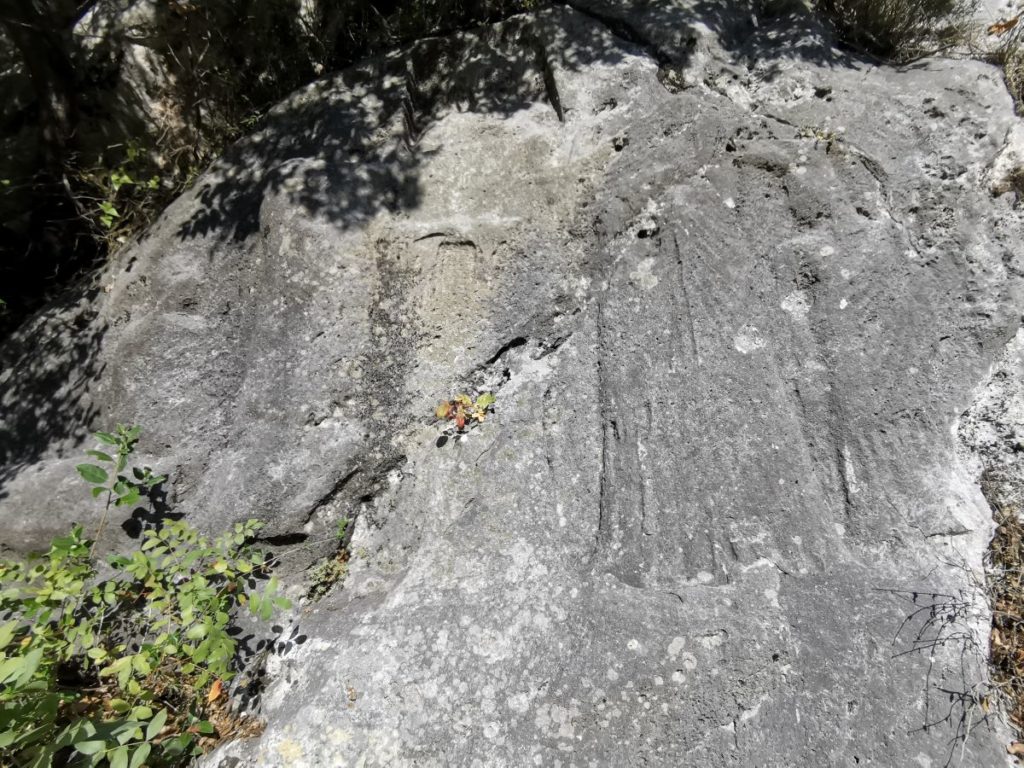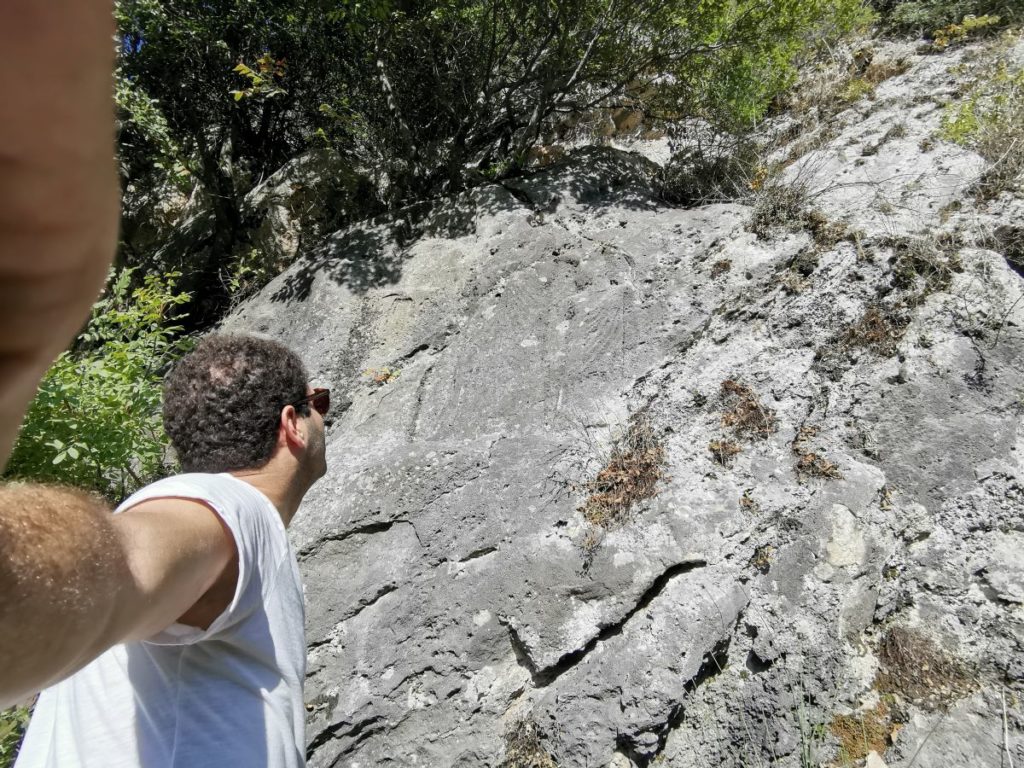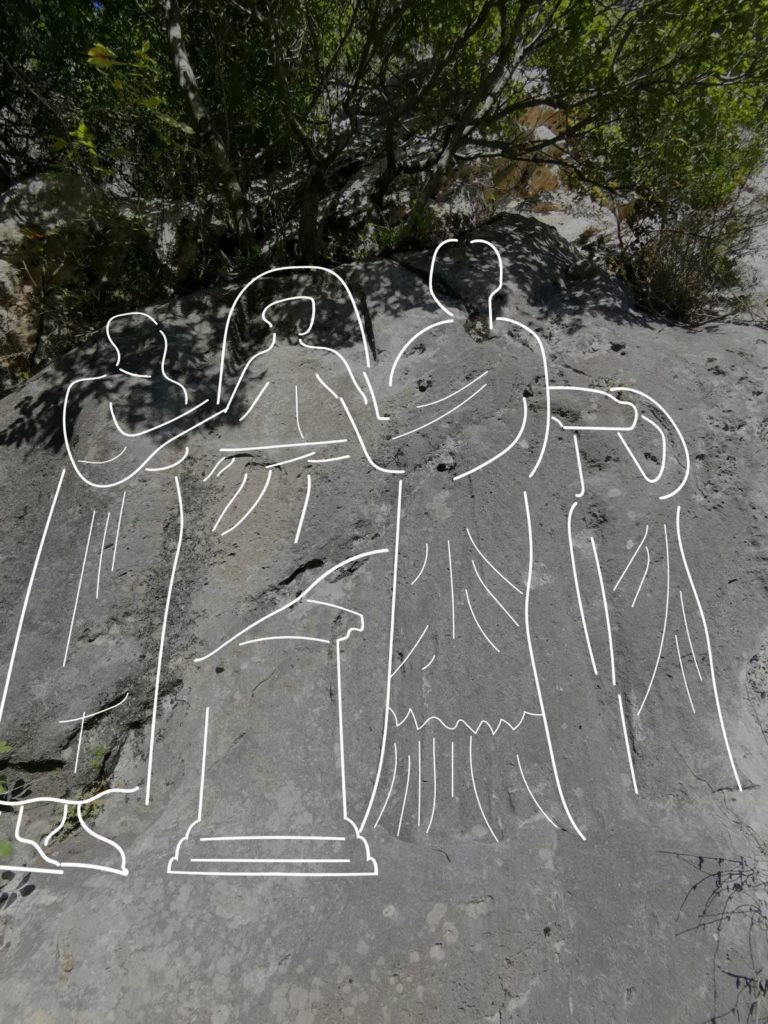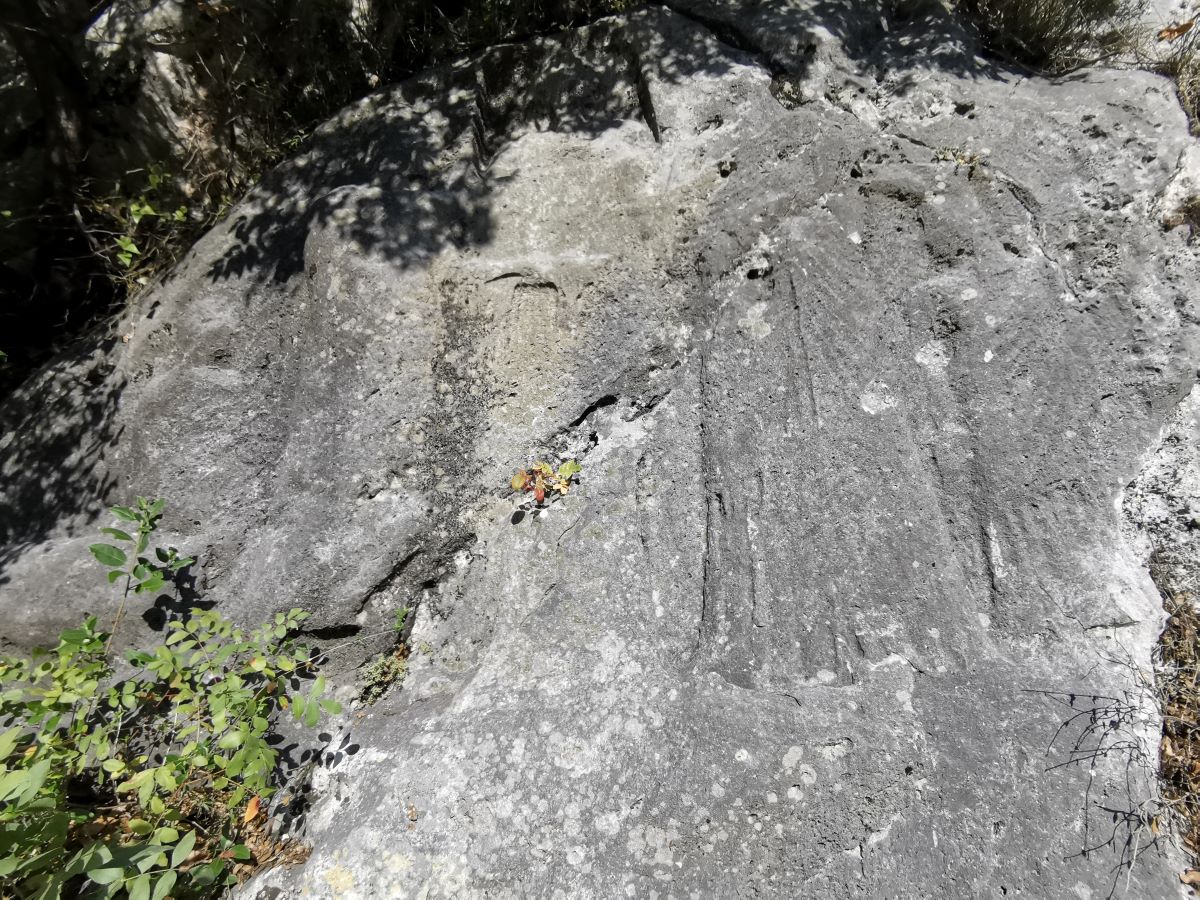Hejoula village houses a rare local type of stele that date back anywhere between the second half of the first millennium BC and the 3rd century AD.
The stele was first mentioned and described by Ernest Renan during his archeological mission in Lebanon and Syria from 1860 until 1874.
Although the stele is barely known to the public and is not easily accessible, it is an important attraction for what it holds in terms of symbol and effects.
Description
The rock cliff of Hejoula bears the relief image of a sacrifice scene, in which four figures take part, placed on either side of a small square altar, the latter completely disappeared due to erosion.
Above the altar is an arched niche, containing a bust of a veiled woman.
On the right of the altar, is a veiled woman who raises her right hand towards the bust, and is followed by a small Kanephoros (a young girl carrying gifts during a procession).
On the left of the altar, is a man wearing a high rounded cap, who raises his right hand towards the bust and advances his left hand above the altar. Behind him is a young boy, short dressed, holding a sheep. The man, the young boy and the sheep can be barely seen due to erosion.
Symbolism
Some scholars suggest that the stele may be linked to funerary rites, same as the steles of Machnaka and Ghine, whereas the representations depict important figures that passed away, and were honored by representing them on rocks near their tombs. In the case of Hejoula stele, the veiled woman might be the main subject being honored by members of her village or family.
It is important to note that near the stele, two rock-cut tombs can be barely seen thru the bushes.
Karim Sokhn
Tour Operator & Tour Guide
References:
Mission de Phénicie, Ernest Renan, 1864-74
https://www.persee.fr/doc/syria_0039-7946_1940_num_21_2_4185
*Acknowledgment to Jihane Abou Khater for marking the figure as per the drawing of Ernes Renan’s designer*




